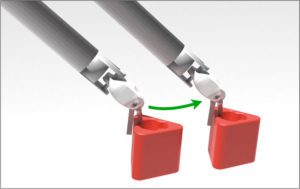
Ken Goldberg thinks artificial intelligence will enable surgical robots to achieve their best function — not replacing surgeons but augmenting their work by reducing the monotony of specific subtasks like suturing.
The William S. Floyd Jr. Distinguished Chair in Engineering at UC Berkeley, Goldberg and his research team have continued to advance the field.
The group — which includes postdoctoral researchers Minho Hwang and Jeffrey Ichnowski and PhD student Brijen Thananjeyan — has demonstrated how a deep neural network plus 3D-printed depth-sensing markers can train a da Vinci surgical robot to automatically perform peg transfer slightly faster and more accurately than an experienced surgical resident.
They also published a paper in Science Robotics last November about new AI software that allows robots to learn how to rapidly plan smooth motions that increase speed and reduce wear in factories, warehouses…and operating rooms.
Their work encompasses so much more, too. (Here’s a list of published research.)
Goldberg recently consulted with his research team to provide some insights to Medical Design & Outsourcing and MassDevice about where the surgical robotics space could advance in coming years.